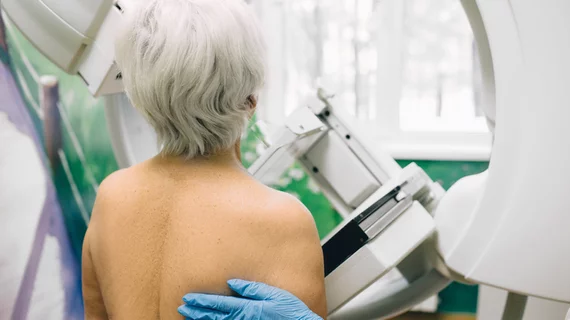Developing a novel quality measure to address poor patient positioning in mammography
Imaging experts have developed a novel quality metric to address poor positioning in mammography, which can subject patients to unnecessary discomfort and potentially keep them from returning for future scans.
To do so, U.K. researchers compiled a list of 15 items visible on breast images that could cause pain, such as a trapped skin fold. First author Patsy Whelehan and co-authors reviewed and scored more than 300 mammograms for presence of these features and determined whether they correlated with patient pain.
They discovered that adverse positioning scores varied from one mammographer to the next, with higher patient body mass index leading to worse positioning scores. No relationship was found between positioning and pain, however, the team reported Friday in the European Journal of Radiology.
“These results indicate potential utility of the new measure for assessing and monitoring staff and service performance and identifying training needs,” Whelehan, a senior research radiographer with the University of Dundee in Scotland, and co-authors advised.
Patients were recruited from a single center within the United Kingdom’s breast screening service for the investigation. Those visiting the hospital-based clinic for breast imaging during a period between 2016-2017 were eligible for the study, filling out a questionnaire afterward to indicate their pain levels. An expert radiographer reviewed each participants' mammogram for the presence or absence of items from the previously mentioned list of 15 items.
The authors cautioned about the small sample size and believe further studies are needed to test out the metric in a larger population.
“The largely good measurement properties of our new measure suggest that it merits expansion, refinement and further testing to evaluate its potential as a comprehensive measure of clinical image quality,” they concluded. "Our approach has the potential to provide measurement reliability and validity where they have hitherto proved highly elusive.”

